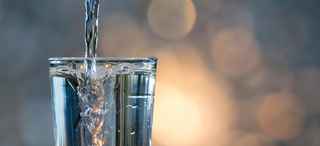Symptoms of Neurogenic Bladder
The main symptom of neurogenic bladder is urinary incontinence, or loss of bladder control. Other symptoms include:
- Difficulty completely emptying the bladder
- Difficulty starting to urinate
- Frequent urination, such as eight or more times per day
- Inability to notice when the bladder is full
- Urgency (feeling the need to urinate immediately)
- Urine leakage
Diagnosing Neurogenic Bladder
Our neuro-urologists have extensive experience in evaluating symptoms and diagnosing neurogenic bladder. We carefully assess each patient in a thorough evaluation that includes a:
- Physical exam
- Review of personal and family medical history
- Discussion of symptoms
To confirm a diagnosis, we might recommend one or more additional tests, such as:
- Cystoscopy: Procedure that uses a cystoscope (thin, flexible tube with a tiny camera and light) inserted through the urethra and bladder to check for tumors, stones, or other abnormalities in the urinary tract
- Ultrasound: Imaging that uses sound waves to produce images inside the pelvic region of the urinary tract and other organs
- Urodynamic studies: Bladder function tests that measure bladder capacity, bladder pressure, urine flow, and amount of urine remaining in the bladder after urination
Treatment for Neurogenic Bladder
With the evaluation results, our neuro-urology team designs a unique treatment plan for each patient, using the latest advances in urology treatment. We provide effective, compassionate care to help patients achieve their best health and get back to the activities they enjoy.
We typically begin treatment with conservative methods such as medication to improve bladder function. These medications can:
- Relax bladder muscles
- Reduce frequency of urination
- Increase bladder storage
- Help empty the bladder more completely
Other nonsurgical treatment methods we use to treat neurogenic bladder include:
- Behavioral techniques: Bladder training to delay urination and empty the bladder more completely
- Lifestyle changes: Reducing fluid consumption, avoiding alcohol or caffeine, losing weight, and increasing physical activity
- Exercises: Kegel exercises to strengthen pelvic floor muscles, when appropriate, and pelvic floor physical therapy to calm overactive muscles of the pelvis
- Clean intermittent catheterization (CIC): Use of a catheter (thin, flexible tube) inserted through the urethra into the bladder several times daily to empty the bladder
- Continuous catheterization: Use of a catheter in place all the time to empty the bladder
If conservative treatments are not successful, our skilled UT Southwestern neuro-urologists offer surgical procedures such as:
- Artificial sphincter: Cuff placed around the bladder neck (where the bladder meets the urethra), which inflates to close the neck and deflates to release urine
- Electrical device: Device implanted near the bladder to stimulate nerves that control bladder muscles
- Sling surgery: Use of tissue from elsewhere in the body or synthetic material to create a support that helps keep the bladder neck closed
- Urinary diversion: Surgical procedures designed to allow urinary drainage when the bladder no longer is able to function adequately; various incontinent (such as ileal conduit) and continent type diversions might by appropriate




